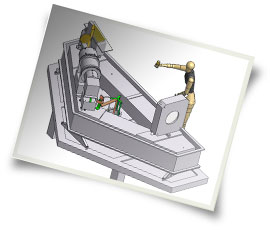
Our Approach
Our approach to the PRVS design is a balance between detailed modelling and experiment. The team has explored in depth the fundamental principles that limit PRV in the near infrared. We have constructed realistic models simulating likely candidates and demonstrated the ability to recover exoplanetary RV signals. See the PRVS feasibility PowerPoint file for more information.
PRVS Feasibility [PowerPoint/5.48 MB]
We have conducted limited experiments with a brass-board instrument to explore real-world issues. See the PRVS Pathfinder poster for more information (external link):
PRVS Pathfinder Poster [PDF/164 KB]
In summary, we find that our design of a fibre fed, white pupil echelle spectrograph working in the Y, J & H bands with simultaneous arc-line calibration will achieve an instrumental radial velocity error of 0.5 m/s. The precision and long term stability of PRVS will allow the detection of Earth-mass planets in the habitable zone around M-stars. The overall design is similar in many respects to the very successful optical PRV instrument HARPS, whose team provided valuable input to the Study.
We have modelled the radial velocity information in low-mass star spectra and checked our ability to recover this signal in the face of telluric contamination. Including instrumental error, telluric contamination and photon noise, PRVS will achieve a total RV error of <1.7m/s on a typical M6V star at 10pc. We use these results as an input to a simulated 5-year survey of nearby M stars. Based on a conservative scaling of optical results, such a survey will detect several terrestrial mass planets in the habitable zone around nearby stars. Recent articles suggest that life may be possible on planets in these regions around M stars (see http://arxiv.org/abs/astro-ph/0609799). Furthermore PRVS will test theoretical planet formation models, which predict an over-abundance of Terrestrial-mass planets around low-mass stars.
Even without the exoplanetary science, the proposed resolution, throughput and wavelength coverage will make PRVS a landmark instrument, enabling a wide range of cutting-edge astronomy. For example the fast acquisition, “always on” feature of PRVS will allow it to take high-resolution NIR spectra of GRBs over a range of redshifts, from 7 < z < 12. From this we can map out the ionization history of the universe in full.